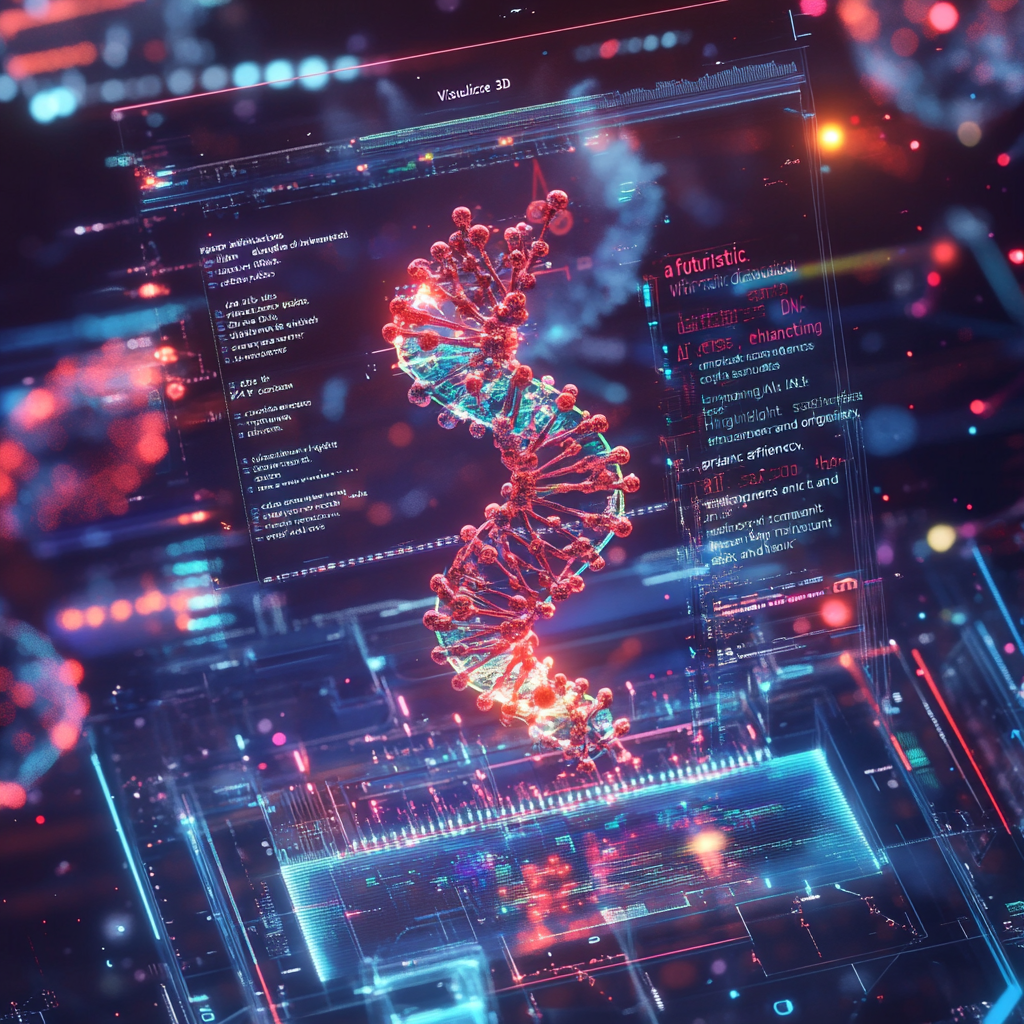
DNA scaffolds enable self-assembling 3D electronic devices
The dawn of the electronics revolution is upon us, and it's weaving a tapestry so intricate and mesmerizing, it would make even the finest silk seem mundane. Enter the world of DNA scaffolds—yes, DNA! Those spiraling double helixes not only carry the blueprints of life but are now stepping onto the stage of electronics like the hottest new band at a festival. Researchers have devised a way to use DNA as scaffolding to assemble self-building three-dimensional (3D) electronic devices with all the grace of an origami crane unfurling in spring. This is not just a mere tweak in method; it's akin to swapping a horse and carriage for a rocket ship. Buckle up, because we’re about to dive deep into this fascinating fusion of biology and technology.
Imagine this: DNA, the molecule responsible for everything from your physical traits to how your cells operate, is repurposed as a building block for electronic structures. It turns out that DNA can do more than carry information; it can fold into specific, intricate shapes, kind of like a three-dimensional puzzle that knows just how to fit together. These researchers are using short strands of DNA to create frameworks that stand tall and proud, ready to support the many components of electronic devices. They attach these strands to gold anchors, which then guide larger DNA constructs to settle into place with precision—an assembly of biological beauty and electronic prowess.
Now, here comes the kicker: after forming these delightful DNA frameworks, they’re coated in materials like silicon oxide and tin oxide, essential players in the semiconductor drama. When all of this carefully orchestrated chaos binds itself together, voila! You’ve got functioning electronic devices, like light sensors that spring to life when kissed by illumination. How cool is that?
But wait—let's zoom out for a moment. Why does this matter? The transition from flat, two-dimensional (2D) circuits to their luscious, curvy 3D cousins could flip the script altogether. We’re talking about a potential surge in computing density and power—a leap that could bring forth brain-like artificial intelligence systems. Yes, those convoluted layers of circuits could closely resemble the organization of our own neural networks, amplifying the capabilities of machines to think, learn, and adapt.
And if that’s not enough to get your gears turning, consider the scalability of this DNA scaffolding. We’re entering a realm where thousands of these structures could easily be integrated onto silicon wafers. This opens doors to complexities in 3D circuitry that would make current methods look like child’s play. The age of tedious, expensive, and time-consuming manufacturing smashingly gives way to an era where creation flows as effortlessly as a river in spring.
Now, don’t think for a moment that DNA has the self-assembling stage all to itself. Over at North Carolina State University, the tech aficionado crew is crafting another playful contender: liquid metal. Yes, liquid metal! This nifty technique known as the "directed metal ligand" allows scientists to manipulate liquid metal to form electronic components—diodes, transistors, the works. By directing this gooey metal into specific molds, you can craft structures that are both highly tunable and quick to produce. This method is often touted as a less costly alternative to traditional chip manufacturing, and with a high yield to boot! Talk about a win-win situation.
Let’s break down the distinctions so we can appreciate both approaches for their unique powers:
-
DNA Scaffolding:
- Utilizes the self-folding magic of DNA for creating 3D structures.
- Harbors the potential to mirror the brain's organizational genius.
- Can be scaled up to integrate thousands of fascinating structures on silicon wafers.
-
Liquid Metal Self-Assembly:
- Engages liquid metal and designed ligands to craft electronic marvels.
- Offers a speedy, budget-friendly method of production contrasted with traditional manufacturing methods.
- Guarantees a high yield of products with minimal waste—like the friend who finishes last night’s pizza but leaves the crusts untouched.
Both of these visionary approaches could reshape the landscape of electronics manufacturing as we know it. Just think for a moment about the possibilities. The integration of DNA and liquid metal can lead us to a playground of new designs and production methods, paving the way for breakthroughs in artificial intelligence, computing, and even the mysteries of biotechnology. The horizon glows invitingly, and we’re just scratching the surface.
Now, if you’re like me—perpetually curious and always itching to know more about the latest in innovative technologies—take a moment to browse through scientific journals and pick apart educational resources that delve into these electrifying advancements. There’s a wealth of knowledge waiting for you, and who doesn’t love knowing what’s on the cutting edge of technology?
Want to stay up to date with the latest news on neural networks and automation? Subscribe to our Telegram channel: @channel_neirotoken. It’s an invitation to join a world of learning where the future unfolds before our very eyes—don't miss out!

